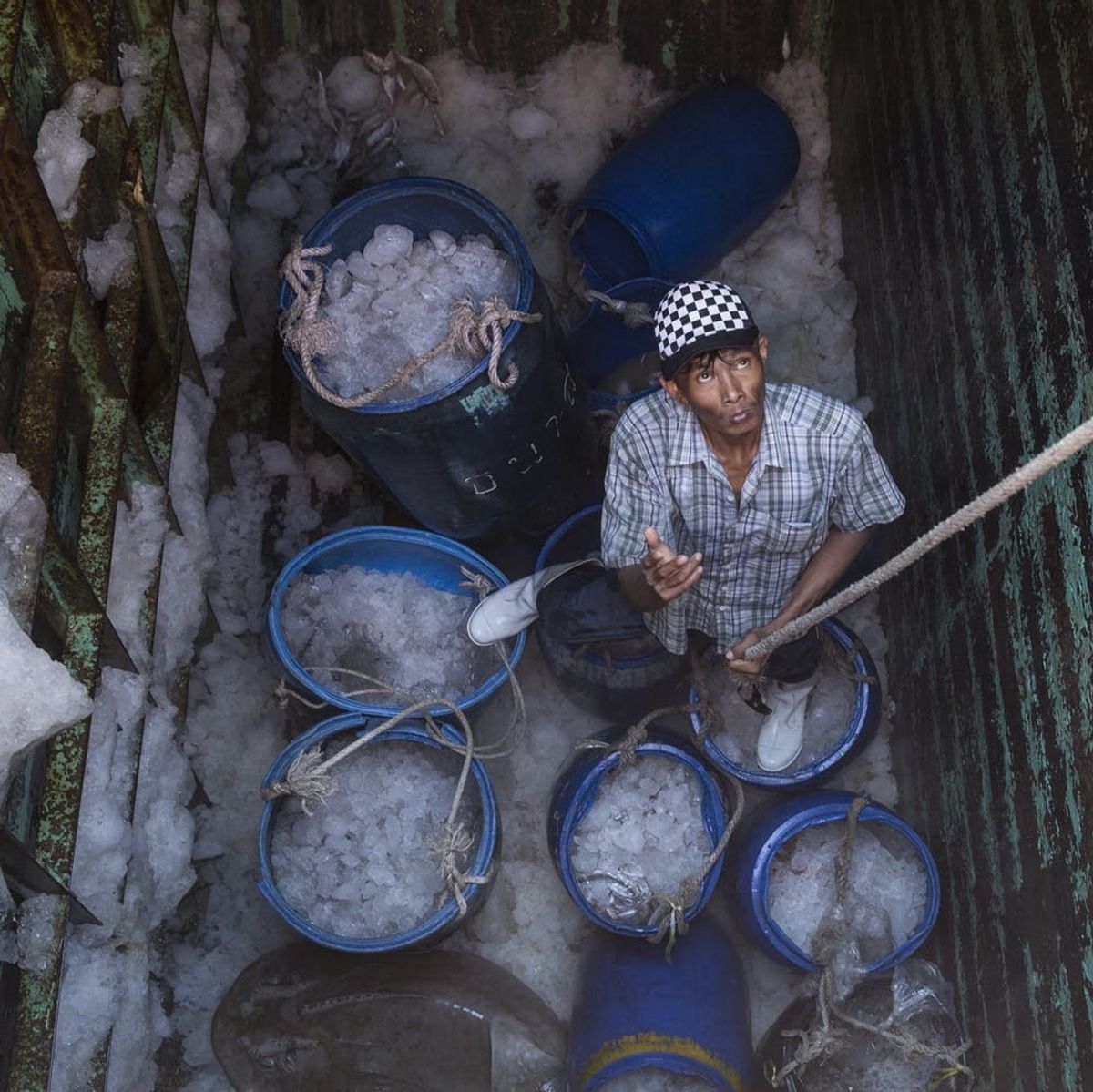Seafood is rated critical, high, moderate, or low risk, depending on the likelihood of forced or child labor.
This New Database Shows if Your Seafood Was Caught Using Slave Labor

Most of us are aware that bad fishing methods can cause major damage to the environment and to fish populations themselves, but did you know that many fisheries are also guilty of major human rights violations? The Seafood Slavery Risk Tool was unveiled Thursday, which aims to reduce the damage that humans do to other humans in the name of catching seafood.
The tool is a group effort, created by the Monterey Bay Seafood Watch, Liberty Asia to Prevent Human Trafficking, and the Sustainable Fisheries Partnership. Users can visit Seafoodslaveryrisk.org to discover the likelihood that forced labor, human trafficking or hazardous child labor was used on the fishing boats used to catch a specific type of seafood in a specific area.

NPR notes that the announcement of the tool comes on the heels of a new report from Human Rights Watch detailing forced labor and numerous human rights violations in the fishery industries in Thailand, mostly perpetrated on migrants from nearby countries like Myanmar and Cambodia.
The tool was designed primarily so that business and financial partners of the three organizations that created it could do due diligence. That being said, the site encourages other business owners to use the tool to ensure that their supply chain is slavery-free.
It’s been difficult for seafood suppliers to know exactly how seafood is being caught and processed, as violations often happen far from shore. This tool will help the companies that bring seafood to the world do so in an ethical manner.
For the average seafood consumer, the tool is interesting to peruse. In order to use it, you need to have some basic awareness about the seafood you’d like to investigate. In addition to knowing either the common or Latin name, you need to know where it was caught, where it was processed, and the method used to catch it. Seafood is rated critical, high, moderate, or low risk, depending on the likelihood of forced or child labor.
Some of the results are surprising. For example, Queen scallops from the United Kingdom are rated critical risk, “based on multiple sources documenting forced labor occurring on board UK-registered scallop vessels.”
The hope is that businesses will use the tool to examine what is happening in their supply chain — and then choose to do the right thing.
Will you be using the database? Tell us @britandco!
(Photo by Paula Bronstein/Getty)



















